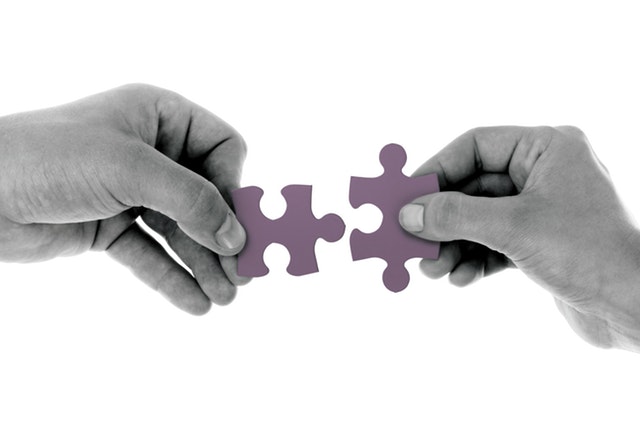Object Relations Therapy is a psychodynamic approach that focuses on the importance of early relationships in shaping an individual’s personality, behavior, and relational patterns. This therapy assumes that our experiences with significant others in childhood form the basis for our understanding of ourselves and others throughout our lives. In this article, we will discuss the principles and techniques of this therapy and its effectiveness in treating various mental health disorders.
Contents
What Is Object Relations Therapy?
 Object Relations Therapy is a form of psychoanalytic therapy that emphasizes the importance of early relationships in shaping an individual’s psychological development and interpersonal relationships. This therapy assumes that individuals internalize representations of their early caregivers. That forms the basis of their internal world and influences their interactions with others throughout their lives.
Object Relations Therapy is a form of psychoanalytic therapy that emphasizes the importance of early relationships in shaping an individual’s psychological development and interpersonal relationships. This therapy assumes that individuals internalize representations of their early caregivers. That forms the basis of their internal world and influences their interactions with others throughout their lives.
The goal of this therapy is to help individuals understand and resolve unconscious conflicts related to these internalized object relationships. That eventually will improve their current relationships and overall well-being.
Key Concepts In Object Relations Therapy
Object Relations Therapy is based on several key concepts that help to explain its approach to psychotherapy. These concepts include:
Objects
In Object Relations Therapy, the term “object” refers to any person, place, or thing that has emotional significance to the individual. These objects can be internalized, meaning they exist in the individual’s psyche as mental representations. Or they can be external, such as actual people or physical objects.
Internalization
Internalization refers to the process of taking external objects and making them a part of one’s internal world. In Object Relations Therapy, the focus is on early childhood experiences, particularly experiences with primary caregivers, and how those experiences shape an individual’s internal object relationships.
Splitting
Splitting is a defense mechanism that individuals use to cope with emotional distress. It involves dividing people and objects into “good” and “bad” categories. And then either idealizing or devaluing them based on their category. In Object Relations Therapy, the therapist helps the individual to recognize and integrate these split-off parts of themselves in order to reduce internal conflict.
Transference
Transference is the process by which the individual’s emotions and feelings about significant others are transferred to the therapist. This transference is seen as an opportunity to explore and resolve unconscious conflicts related to internalized object relationships.
Countertransference
Finally, this Countertransference is the therapist’s emotional reaction to the individual, which can be influenced by their own internalized object relationships. The therapist is encouraged to reflect on their countertransference reactions in order to gain insight into the individual’s internal world.
By understanding these key concepts, therapists are able to help individuals explore their internalized object relationships. And then, resolve unconscious conflicts, and improve their current relationships and overall well-being.
Techniques And Interventions In Object Relations Therapy
 It is a psychodynamic approach that emphasizes the importance of early relationships in shaping an individual’s personality and behavior. Here are some common techniques and interventions used in Object Relations Therapy:
It is a psychodynamic approach that emphasizes the importance of early relationships in shaping an individual’s personality and behavior. Here are some common techniques and interventions used in Object Relations Therapy:
- Free Association
This technique involves the individual speaking freely and openly about whatever comes to mind. The therapist encourages the individual to explore their internal experiences and feelings, including those related to early object relationships.
Dreams are seen as a way for the unconscious mind to communicate with the conscious mind. In Object Relations Therapy, dreams are interpreted as expressions of internalized object relationships,. And the therapist helps the individual explore and understand the symbolic meaning of their dreams.
- Projective Identification
This is a process by which the individual projects their internal experiences and feelings onto others, often without realizing it. The therapist helps the individual become aware of this process. And explore how it relates to their internalized object relationships.
- Role Playing
This technique involves the individual playing out scenarios related to their internalized object relationships. The therapist provides feedback and guidance to help the individual explore. And understand their emotional responses in these scenarios.
- Imagery and Visualization
This technique involves the use of guided imagery and visualization to help the individual explore their internalized object relationships and unconscious conflicts. The therapist provides suggestions for images and symbols related to the individual’s emotional experiences.
Overall, this is a collaborative and exploratory process that helps individuals gain insight into their internalized object relationships and work towards resolving unconscious conflicts. By using a variety of techniques and interventions, therapists can help individuals improve their current relationships and overall well-being.
What Are The Benefits Of Considering This Therapy?
 Now, if you are considering this therapy, it can offer several benefits for individuals seeking treatment for mental health issues. Here are some of its potential benefits:
Now, if you are considering this therapy, it can offer several benefits for individuals seeking treatment for mental health issues. Here are some of its potential benefits:
- Improved self-awareness: The therapy helps individuals develop a deeper understanding of their internalized object relationships and unconscious conflicts. This increased self-awareness can lead to improved emotional regulation and more fulfilling relationships.
- Resolving unconscious conflicts: By exploring and resolving unconscious conflicts related to internalized object relationships, individuals can reduce internal conflict and improve their overall well-being.
- Improved relationships: Finally, it can help individuals improve their current relationships by gaining insight into their emotional patterns and learning new ways of relating to others.
- Increased empathy and compassion: As individuals gain insight into their own internal world, they may become more empathetic and compassionate towards others.
- Improved sense of self: Object Relations Therapy can help individuals develop a stronger sense of self and improve their self-esteem.
- Treatment for a variety of mental health disorders: Finally, it has been shown to be effective in treating a range of mental health disorders. Including depression, anxiety, personality disorders, and eating disorders.
Overall, this offers individuals a way to explore and resolve unconscious conflicts related to their internalized object relationships. By gaining insight into their emotional patterns and developing new ways of relating to themselves and others, individuals can improve their overall well-being and quality of life.
How Much Is Objects Relations Therapy Effective?
Research studies have shown that Object Relations Therapy can be an effective form of psychotherapy for a range of mental health disorders. For instance, a study has found that this therapy was effective in reducing symptoms of depression in adults. Another study has found its effectiveness in reducing symptoms of anxiety in adults.
A meta-analysis of studies published in the Journal of Psychiatry found that this therapy was effective in treating personality disorders, particularly borderline personality disorder. Overall, therapy outcomes depend on various factors, such as:
- therapist’s skill and experience
- individual’s level of motivation
- the severity of the mental health issues being addressed
All in all, Object Relations Therapy has been shown to be an effective form of psychotherapy for many individuals seeking treatment for mental health issues. With its focus on early relationships and internalized object relationships, this can offer individuals a unique and effective approach to improving their mental health and well-being.
Conclusion
To conclude, object relations therapy is a psychodynamic approach to psychotherapy that emphasizes the importance of early relationships in shaping an individual’s personality and behavior. By exploring and resolving unconscious conflicts related to internalized object relationships, individuals can improve their emotional regulation and overall well-being. The use of various techniques and interventions can help individuals gain insight into their internal world. And improve their relationships with themselves and others.
Research studies have shown that it can be effective in treating a range of mental health disorders. Such as depression, anxiety, personality disorders, eating disorders, and relationship issues. Overall, this offers individuals a collaborative and exploratory process for gaining insight into their internalized object relationships. And working towards improved mental health and well-being.
For more information, please contact MantraCare. Relationships are an essential part of human life. It is the connection between people, and it helps us to form social bonds, and understand and empathize with others. If you have any queries regarding Online Relationship Counseling experienced therapists at MantraCare can help: Book a trial therapy session


